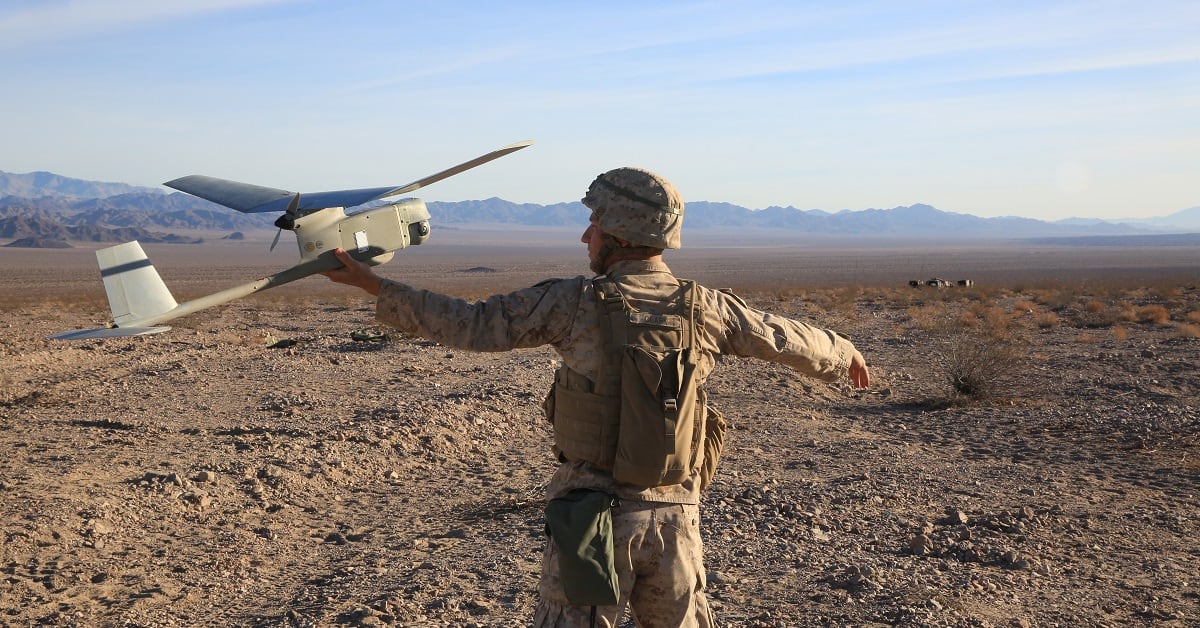As the Corps looks to protect its small units in far-flung places, it has had to ditch light artillery and is instead looking for “loitering munitions” both large and small.
A notice posted on a federal government contracting website in mid-November has a deadline of January. That potential project is a man-portable system that can launch a swarm of suicide drones.
They’re calling it the Organic Prevision Fire-Infantry, or OPF-I. If successful, planners expect it to be able to launch swarming drones capable of a 20 km range for 90 minutes or more.
RELATED

While the particulars may be fresh, the intent has been lingering in the minds of Marine Corps war planners for some time, with some success but also failure for more ambitious projects.
Back in 2018, the Corps envisioned up to 15 suicide drones, or loitering munitions, in the hands of infantry units with a mix of abilities ― from warheads for troop and vehicles to electronic attack payload to take out enemy communications or sensor systems.
At around the same time, the Corps announced that it would divest of 120 mm mortar systems, leaving a gap of firepower coverage that it hopes loitering munitions could fill.
In 2020, Marine planners added swarming suicide drones to its wish list of weapons options for the light armored reconnaissance vehicle, even looking to missiles packed with such drones that could be launched from existing weapons platforms on the LAV. That system was expected to span the 7,000 meters to 100 km range.
That effort was dubbed the Organic Precision Fires-Mounted, or OPF-M.
“What we are really looking to do here is push the envelope, so to speak, and build tomorrow’s system today,” Jeff Nebel, then-Marine Corps Systems Command’s fire support coordination team lead for fires, said at the time.
But on the bigger system side, ambitions had to be scale back somewhat in early 2020.
In March, after years of effort to find funding in the larger Marine Corps and Navy budgets, Lt. Gen. Steven Rudder, deputy commandant for Aviation, gave up on the Marine Air-Ground Task Force Unmanned Aerial System Expeditionary, or MUX.
The MUX was a Corps-focused, ship-based system that would provide high level surveillance, long-range reconnaissance and the ability to coordinate fires from a variety of platforms to targets on land and sea.
Instead, the do-it-all drone will likely be split up into a “family of systems” Rudder said at the time. And many will be land-based for those small units of Marines expected to dot the atolls and tiny island chains, giving the Navy a much-needed sea control assist.
By putting it on land, the power and weight requirements are reduced because it can have a longer runway for takeoff, Rudder said.
This is an excerpt from “21 Things Marines Need To Know For 2021,” in the January print edition of Marine Corps Times.
Todd South has written about crime, courts, government and the military for multiple publications since 2004 and was named a 2014 Pulitzer finalist for a co-written project on witness intimidation. Todd is a Marine veteran of the Iraq War.




